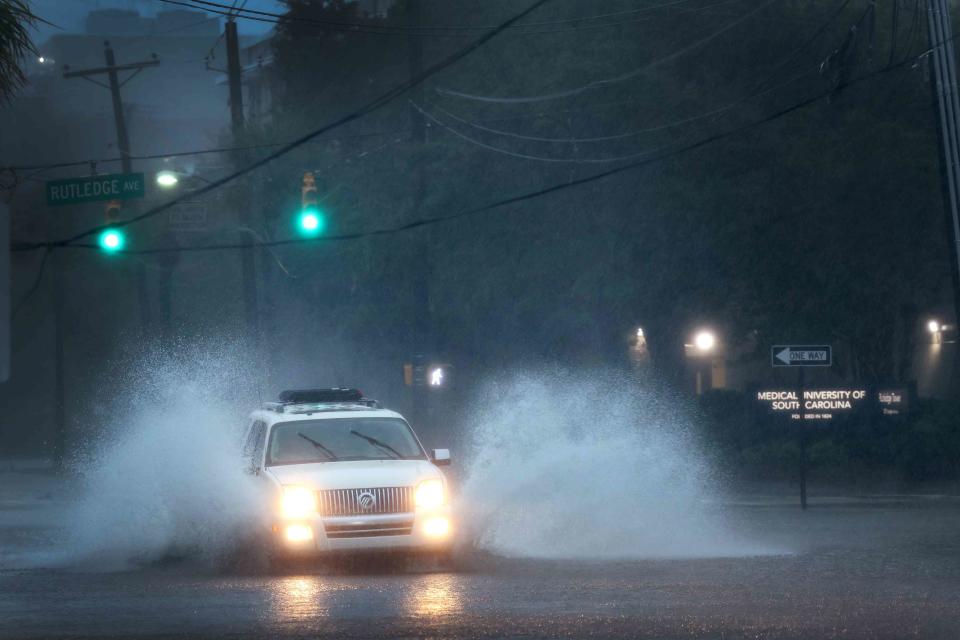Late-Season Storm Brings Record Tides, Major Flooding To Charleston Area
Thankfully, recovery is already underway.

Scott Olson/Getty Images
Heavy rains and high tides caused record-breaking flooding in Charleston, South Carolina, over the weekend.
According to The Post and Courier, tides in Charleston Harbor peaked at 9.86 feet on Sunday afternoon, just as a Nor’easter made its way into the Lowcountry from Georgia. The result was Charleston’s highest non-tropical tide on record and the fourth-highest in the city’s history.
Officials closed several roads in downtown Charleston due to floodwaters and urged motorists to stay off roads due to the risk of life-threatening flash flooding. The heavy rains caused knee-deep floodwaters in the city’s medical district, where hospital employees were filmed getting to work via rowboat.
Courtney Maskell, a meteorologist with the National Weather Service, told KIRO7 that Sunday’s levels were topped only by Hurricane Hugo’s 12.52 feet in 1989; an unnamed storm that brought tides of 10.23 feet in 1940; and 9.92 feet recorded when Hurricane Irma struck the area in 2017.
Meteorologist Jeff Masters, co-founder of the Weather Underground, explained to the Associated Press that rising sea levels driven by climate change mean even relatively weak weather systems can now produce storm surges previously associated with hurricanes.
“In Charleston, this is the sixth time this year already that they’ve had a major coastal flood. Most of those would not have been major flooding 100 years ago, because the sea level has risen that much,” Masters said.
SIGNIFICANT FLOODING ongoing in Charleston, SC. Up to 6 cars now stranded as flow from the river increases the depth of floodwaters. Live On @RadarOmega @foxweather and YouTube: https://t.co/E7DVxuYOBh pic.twitter.com/rbArEAnRS5
— Brandon Copic (@BrandonCopicWx) December 17, 2023
Charleston Mayor John Tecklenburg called Sunday a “tough and frustrating day” for residents while urging optimism.
“This was a tough and frustrating day for our citizens, as historic high tides came up and over the land in the city, flooding cars, homes, businesses, and streets,” he said in a statement. “Thankfully, no major injuries have been reported at this time, and recovery efforts are already underway.”
“As I said recently, I’ve never been more optimistic about the future of our city,” Tecklenburg continued. “But that optimism depends on our ability to adapt to sea level rise and climate change, which forecasters tell us will bring punishing tides like the ones we saw today on a monthly or even weekly basis in the decades to come. That’s why the city is working with the Army Corps of Engineers on a plan to protect our citizens from this kind of tidal flooding. And it’s why we must continue to move forward until Charleston has the perimeter protection and other infrastructure it needs to survive and thrive in the years ahead.”
For more Southern Living news, make sure to sign up for our newsletter!
Read the original article on Southern Living.

